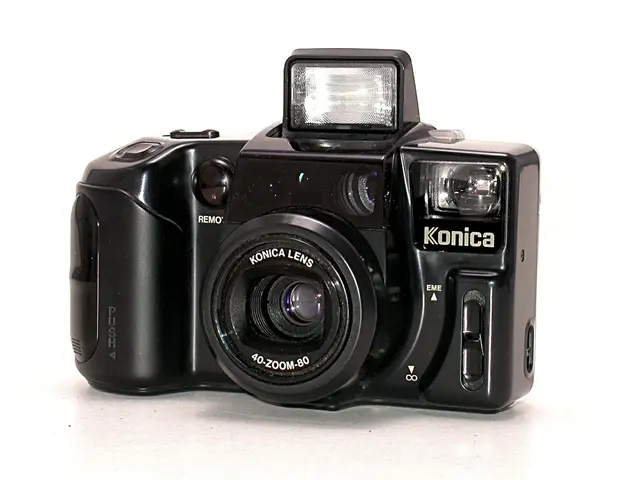Transforming Outdated Smartphones into Compact Data Centers for Just $10
**Transforming Old Smartphones into Miniature Data Centers: A Sustainable Solution for Edge Computing**
In an innovative move towards sustainability, researchers have discovered a way to repurpose old smartphones into miniature data centers, offering a cost-effective and eco-friendly approach to edge computing.
**Key Steps to Create Miniature Data Centers from Old Smartphones**
1. **Battery Removal and External Power Supply:** To ensure safe and long-term operation, researchers remove old smartphone batteries, which often degrade and pose environmental risks due to chemical leaks. These batteries are replaced with stable external power sources, eliminating contamination risks.
2. **Clustering Multiple Phones:** Several smartphones, such as four Google Nexus devices, are connected together in a cluster. One phone acts as the master node coordinating tasks, while the others serve as worker nodes to distribute computational workloads.
3. **Custom Housing and Power Regulation:** The phones are housed in custom-made 3D-printed casings that hold the devices securely and include circuitry to regulate voltage and power supply. This setup allows easy maintenance and replacement.
4. **Installing Lightweight, Open-Source Operating Systems:** To gain full control and enhance security, the original phone OS is replaced with lightweight Linux-based systems such as Postmarket OS, enabling better hardware control and software flexibility for specialized applications.
5. **Edge Deployment for Real-Time Tasks:** These phone clusters can be deployed in situ for specific monitoring or computing functions. Examples include underwater deployment to identify marine species using connected cameras, or mounting at bus stops to collect and analyze passenger flow in real time, aiding urban planning.
6. **Energy Efficiency and Sustainability:** Compared to traditional data centers, these smartphone clusters consume significantly less power and help reduce toxic electronic waste by giving old devices a second life.
**Applications Demonstrated**
The repurposed smartphones have shown promising results in various applications, including marine life monitoring, urban public transport analytics, and AI and edge computation. For instance, a phone cluster placed underwater was able to successfully identify and count fish species, automating what typically demands labor-intensive manual video analysis by divers. Deployed at bus stops, the clusters collected passenger data that can optimize city transport systems.
**Cost and Accessibility**
The cost to convert a phone is low, around €8 ($9.30), mainly involving the external power module and custom casing. Old smartphones can often be sourced from discarded or unused devices, making this approach an accessible, environmentally conscious way to reuse e-waste.
**A Step Towards Sustainability**
These miniature data centers offer a sustainable path by extending the useful life of devices and reducing both e-waste and the need for new applications. The study hopes to push governments and regulators to introduce right-to-repair policies and encourage manufacturers to make devices more customizable, repairable, and reuse-friendly.
Ulrich Norbisrath, one of the study authors, states that sustainability is about reimagining the present, where yesterday's devices become tomorrow's opportunities. The study, published in the journal IEEE Pervasive Computing, uses modular Nexus series phones that are easier to open and modify.
With the world discarding over five billion phones every year, many of which end up in landfills, leaking toxic substances like lead and mercury, this innovative approach could play a significant role in reducing e-waste and promoting sustainability.
- This sustainable innovation repurposes old smartphones into miniature data centers, offering a cost-effective and eco-friendly approach to edge computing in the field of environmental-science.
- Leveraging physics principles, researchers removed old smartphone batteries and replaced them with stable external power sources, promoting energy efficiency and sustainability.
- In the realm of technology, clusters of several phones, such as Google Nexus devices, are connected together to create a network that can handle computational workloads.
- As a contribution to science, these phone clusters are deployed in various environments, such as underwater and at bus stops, to collect and analyze data for real-time tasks and enhanced sustainability.
- The environmental impact of these phone clusters is minimized, as they consume significantly less power and reduce toxic electronic waste by giving old devices a second life.
- As demonstrated, these repurposed smartphones have shown promising results in applications like marine life monitoring, urban public transport analytics, and AI and edge computation.
- The accessibility of this approach is also remarkable, as the cost to convert a phone is low, and old smartphones can be sourced from discarded or unused devices.
- This study calls for a shift towards sustainability, urging governments and manufacturers to introduce right-to-repair policies and make devices more customizable, repairable, and reuse-friendly, further promoting the future of smartphone technology and the well-being of the planet.







